
 I have no particular desire to attend SMOFCon these days. Being a dealer means that I have no time for con-running. But I am interested in spending time with Kevin, and when SMOFCon is not in the USA that’s an opportunity. When it is in Montréal, with the additional promise of excellent food, it is a no-brainer. So I got to spend a week in the Montréal Sheraton, which was an interesting experience.
I have no particular desire to attend SMOFCon these days. Being a dealer means that I have no time for con-running. But I am interested in spending time with Kevin, and when SMOFCon is not in the USA that’s an opportunity. When it is in Montréal, with the additional promise of excellent food, it is a no-brainer. So I got to spend a week in the Montréal Sheraton, which was an interesting experience.
When SMOFCon #38 was scheduled for Montréal, everyone was anticipating a quiet weekend in Canada. Surely no one would arrange a major international conference in the same city at very short notice, would they? Well, as it happened…
COP15 is the 15th iteration of the UN’s biodiversity conference. It is separate from the sequence of climate change conferences such as COP27 which recently took place in Cairo. The biodiversity conferences take place once every 10 years, but COP15 was supposed to take place in China in 2020 and the Chinese government’s strict COVID policy made that impossible. Eventually the UN did a deal whereby Canada would host the event and China would still get to chair it.
As a result, hotel rooms in Montréal were suddenly at a premium, except that our little event had booked out a bunch of them at one of the city’s top hotels. To their credit, the Sheraton did not try to get rid of us. But we did have to put up with some of their other guests. The Montréal police appeared to be using the hotel as a command post, and when you got in an elevator there was a good chance you’d find you were sharing it with an armed police officer.
Quite what the forces of Law and Order made of the hotel notice board listing the rooms for the “Secret Master of Fandom Convention” (sic), we never found out.
I got stopped by the police once. Kevin and I were walking back from breakfast and a lady police officer came over to speak to me. It turned out she wanted to compliment me on my outfit. “You look very cute,” she said. I’m assuming she was a lesbian. As it happens, I did look very cute.
I didn’t attend much of SMOFCon, partly because I ended up working for much of the weekend, and partly because of attending When It Changed. However, I did have a membership. That allowed me to get free lunch in the consuite. Not normally free breakfast, because Kevin and I took every opportunity to visit Eggspectation who do the best breakfasts on the planet.
Having a membership also allowed me to attend the event that we are no longer allowed to call the Fannish Inquisition. I did, after all, want to see what was happening with the future of Worldcon. Thanks to Kevin’s hard work, all of the presentations in that session are available to view online via YouTube.
I won’t bother to repeat everything that was said as you can watch them yourselves if you are interested, but I can report on my personal view of the presentations and what I perceived to be the mood in the room.
None of the Chinese fans involved in running the Chengdu convention were at SMOFCon. We were told that this was a money issue. Their attendance at previous cons had been sponsored, and no one was willing to pay for them to go to SMOFCon. Instead the Chengdu convention was represented by Ben Yalow (co-chair), Dave McCarty (Hugos & Site Selection), Carolina Gómez Lagerlöf (Online program) and a bunch of other Western fans who seemed to be there to bulk out the panel.
There were two themes that I felt came through strongly in the Chengdu presentation. The first was “We cannot control the Chinese government”. This was said particularly with respect to visas and COVID restrictions, but also with regard to potential censorship. Chengdu is by no means alone in this problem. Formula 1 has recently cancelled the 2023 Chinese Grand Prix because the Chinese organisers were unable to reassure them that the teams, and the attendant media circus, would be able to get into the country for the race, and out again in time for the next race on the calendar. F1 is a far bigger thing than Worldcon, and if they can’t run an international event in China next year we should not be surprised if we can’t either.
Of particular concern to those in the room was the slide on how to get a visa. Tucked away at the bottom of the list of requirements was the need for a personal letter of recommendation. I happen to know a few Chinese fans who might be willing to help, but most people in the room had no idea how they’d get that. As it happens, I’m not planning to waste time and energy applying for a visa. Kevin says he will try, but he has no confidence that he will get one.
The other key theme was sponsorship. As in Finland, fannish conventions in China are traditionally free to attend, and rely on sponsorships of various sorts to supply the money needed to run the event. According to Ben and his colleagues, the Chengdu committee currently does not have all of the sponsorship it would like in place, and consequently they can’t guarantee what will be on offer at the convention. It is somewhat worrying that, less than a year out, the convention may be very short of money, and clearly this will impact their ability to stream any of the convention.
Incidentally, in line with this policy, the Chinese have made everyone who had a supporting membership by dint of voting in Site Selection a full attending member of the convention. Not that many of us will be able to attend in person, but attendance is free. You only pay for your WSFS membership, which is the money you paid to vote in Site Selection. I also understand that local Chinese fans will be allowed to attend for free. They will not have to buy WSFS memberships in order to do so. This is in stark contrast to Glasgow who are insisting that all attendees also be WSFS members. There is no constitutional requirement for that.
The assembled SMOFs were, of course, very interested in what would happen with the WSFS functions. Dave McCarty does have plenty of experience running the Hugos and Site Selection, so if he’s allowed to get on with the job I’m sure he’ll do fine. But these two things should also be open to Chinese fans, and that means having dual-language websites for voting. Site Selection will also require both Western and Chinese fans to be able to pay their WSFS memberships for 2025, and we’ve already seen what problems this caused for DC in 2021. I have no idea what will happen. The time for opening Hugo nominations is approaching fast.
The Business Meeting is another matter. Ben stated that the quorum for a meeting is 12 people, and he anticipated no problem meeting that requirement. We can therefore expect that the 2023 Business Meeting will be very small, and attended solely by Ben, those other few Western fans who managed to get visas, and maybe one or two curious Chinese. Ideally it will follow the example of Wellington and vote to pass all business on to the following year, then adjourn. However, Ben made no mention of this possibility. Thankfully, if we do end up with a rogue meeting, anything it does can be undone in Glasgow. However, this will be a huge waste of people’s time.
The SMOFs, for whom catastrophizing is a favourite hobby, wanted to know what would happen if the Chengdu convention did not happen (for example the city might be in Lockdown at the time), or if it was unable to discharge WSFS functions. The answer appears to be that, as and when Chengdu admits that it cannot fulfill it’s obligations, responsibility passes to Glasgow, who may then call upon the Winnipeg NASFiC for help. But until Chengdu admits failure, nothing can be done. Because there is no “WSFS Board” that can take charge.
In comparison, Glasgow was the epitome of calm, organised efficiency. Frankly they could have announced that the SECC had been eaten by Nessie and they would have still come out of the day smelling of roses compared to Chengdu. The only major case for concern seemed to be whether their hotel offerings included a Hilton property, but I’m pretty sure I saw a Garden Inn on the list.
Future years seem locked in until 2026, and are somewhat hazy from then on. Seattle looks a shoe-in for 2025, and has a lovely-looking new convention centre. Los Angeles is probably equally certain for 2026. Much as I would love to go to Egypt, I suspect their bid will be tainted by the Saudi connection (same people bidding), and sunk by the usual American fear of leaving the country. There is a bid for Tel Aviv in 2027. I wish them all the luck, but with apologies to my pals in Israel, I am no more happy to visit your country than I am Saudi Arabia, especially after the recent elections.
2028 has two bids. One is for Brisbane, Australia, but it has not been very active and did not send anyone to SMOFCon. The other is from Kampala in Uganda. They did an impressive presentation via Zoom, and I’d love to see a Worldcon in Africa, but that’s another country where I would not feel safe. 2029 has a bid for Dublin. If I’m still fit enough to travel, that looks like the next Worldcon I will be able to attend after Glasgow.
The team running the Winnipeg NASFiC next year have a lot of Worldcon experience, and I’m pretty sure they will do a good job. My only worry is that they get overwhelmed with memberships because of the ongoing issues with Chengdu. I certainly plan to be there.
My only other observation from the event is that the people who attend SMOFCon seem to be increasingly people whose sole interest is in running a big convention. They don’t care much about WSFS, aside from being allowed to present the Hugos. That observation goes double for the people who end up in senior positions on Worldcon committees. Allegedly one of the co-chairs of the Seattle bid nurses a burning hatred for all things WSFS, so there may be some interesting fireworks come 2025.
It get the impression that a lot of the people at SMOFCon would be very happy if the WSFS Constitution were to fall into a convenient black hole, and that the right to call your convention “Worldcon”, and present whatever version of the Hugos you felt appropriate, should be decided at SMOFCon. I don’t think this would be an improvement on the current situation, but at least fandom at large would no longer believe in the “WSFS Board” and would blame the people actually responsible for anything that they were unhappy with.

 It has been a long and very strange trip, but Roz Kaveney’s Rhapsody of Blood series has reached a conclusion. I reviewed the first book in the series, Rituals, back in 2012. Three more volumes followed, initially yearly, but then at increasing gaps. There was a pandemic. But at Eastercon there will be a launch event for Revelations, the fifth and final volume.
It has been a long and very strange trip, but Roz Kaveney’s Rhapsody of Blood series has reached a conclusion. I reviewed the first book in the series, Rituals, back in 2012. Three more volumes followed, initially yearly, but then at increasing gaps. There was a pandemic. But at Eastercon there will be a launch event for Revelations, the fifth and final volume.

 This is another film I would have loved to see in a movie theatre, but was too busy to see when it was first out. Given its success in the Oscars, it may be back in cinemas again, but I have no car right now so I had to watch it on the small screen. That may have been less than ideal.
This is another film I would have loved to see in a movie theatre, but was too busy to see when it was first out. Given its success in the Oscars, it may be back in cinemas again, but I have no car right now so I had to watch it on the small screen. That may have been less than ideal.
 Readers in the UK will doubtless be familiar with Bettany Hughes from her many, many TV shows about various aspects of ancient history. Those of you in the rest of the world may not know her at all, but please be assured that she’s popular here, and also knows what she is talking about.
Readers in the UK will doubtless be familiar with Bettany Hughes from her many, many TV shows about various aspects of ancient history. Those of you in the rest of the world may not know her at all, but please be assured that she’s popular here, and also knows what she is talking about.

 I’ve arrived at book three in my read through of Susan Cooper’s The Dark is Rising sequence. Somewhat to my surprise, Greenwitch sees the return of the Drew Children from Over Sea, Under Stone. The plot is basically the need to recover the item that was lost to the sea at the end of that book, but along the way Cooper delves deeply into folklore again.
I’ve arrived at book three in my read through of Susan Cooper’s The Dark is Rising sequence. Somewhat to my surprise, Greenwitch sees the return of the Drew Children from Over Sea, Under Stone. The plot is basically the need to recover the item that was lost to the sea at the end of that book, but along the way Cooper delves deeply into folklore again.


 This is the February 2023 issue of Salon Futura. Here are the contents.
This is the February 2023 issue of Salon Futura. Here are the contents. The Ballad of Perilous Graves
The Ballad of Perilous Graves Hopeland
Hopeland The Dark is Rising
The Dark is Rising The Fortunate Fall
The Fortunate Fall Hugo Recommendations
Hugo Recommendations The Cavalry Maiden
The Cavalry Maiden Wakanda Forever
Wakanda Forever Gunbuster
Gunbuster Ant Man and the Wasp: Quantumania
Ant Man and the Wasp: Quantumania Editorial – February 2023
Editorial – February 2023 The cover of this month issue is Ben Baldwin’s art for the latest volume in Chaz Brenchley’s Outremer series. A Dark Way to Glory is currently
The cover of this month issue is Ben Baldwin’s art for the latest volume in Chaz Brenchley’s Outremer series. A Dark Way to Glory is currently 
 The Ballad of Perilous Graves is one of the books we picked for a finalist in the Crawford Award. It has been talked about by a lot of people and is on a few other award shortlists. Deservedly so, I think, though I have a few qualms about structure.
The Ballad of Perilous Graves is one of the books we picked for a finalist in the Crawford Award. It has been talked about by a lot of people and is on a few other award shortlists. Deservedly so, I think, though I have a few qualms about structure.
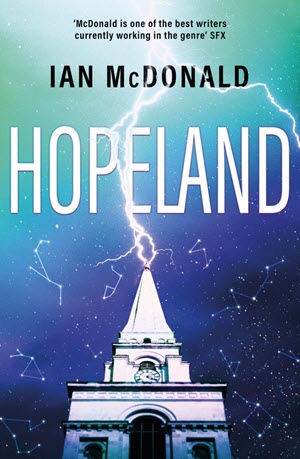 Late in 2021, Ian McDonald asked me if I could do a sensitivity read on his next book, which had some gender themes to it. Naturally I leapt at the opportunity. The book was called Hopeland, and I’m very glad to have had a small part in the making of it. My report to Ian began:
Late in 2021, Ian McDonald asked me if I could do a sensitivity read on his next book, which had some gender themes to it. Naturally I leapt at the opportunity. The book was called Hopeland, and I’m very glad to have had a small part in the making of it. My report to Ian began:
 As I expected, the long gap between Over Sea, Under Stone and The Dark is Rising saw a significant improvement in quality. Gone is the sub-Enid Blyton jolly tale of children on their summer holidays. In its place is a much darker, much more atmospheric and decidedly more adult tale rooted firmly in British folklore. I totally get why so many people love it.
As I expected, the long gap between Over Sea, Under Stone and The Dark is Rising saw a significant improvement in quality. Gone is the sub-Enid Blyton jolly tale of children on their summer holidays. In its place is a much darker, much more atmospheric and decidedly more adult tale rooted firmly in British folklore. I totally get why so many people love it.
 Back in 1999, someone then known as Raphael Carter won the Otherwise (then Tiptree) Award for a short story called “Congenital Agenesis of Gender Ideation”. Carter was one of the first people I had heard of who had a non-binary gender identity. Indeed, we were told that Carter had no gender.
Back in 1999, someone then known as Raphael Carter won the Otherwise (then Tiptree) Award for a short story called “Congenital Agenesis of Gender Ideation”. Carter was one of the first people I had heard of who had a non-binary gender identity. Indeed, we were told that Carter had no gender. It is that time of year again. Thankfully the Chengdu committee seem to have managed to get voting open. They have also made the necessary step of establishing rules for word counts in Chinese. I very much hope to see some Chinese works on the ballot.
It is that time of year again. Thankfully the Chengdu committee seem to have managed to get voting open. They have also made the necessary step of establishing rules for word counts in Chinese. I very much hope to see some Chinese works on the ballot. When you think of trans autobiographies, you don’t often think of interesting history books. Even I don’t. I have, after all, read quite a few, and have mostly given up on the genre. There are a few, however, that were written centuries ago, and are much more interesting than the modern fare.
When you think of trans autobiographies, you don’t often think of interesting history books. Even I don’t. I have, after all, read quite a few, and have mostly given up on the genre. There are a few, however, that were written centuries ago, and are much more interesting than the modern fare.
 It was, I think, inevitable that any sequel to Black Panther would fail to live up to the magic of the original movie. For it to try to do so without the magnetic presence of Chadwick Boseman was probably a recipe for disaster. Thankfully Wakanda Forever is not a bad movie, it is just not a great one.
It was, I think, inevitable that any sequel to Black Panther would fail to live up to the magic of the original movie. For it to try to do so without the magnetic presence of Chadwick Boseman was probably a recipe for disaster. Thankfully Wakanda Forever is not a bad movie, it is just not a great one.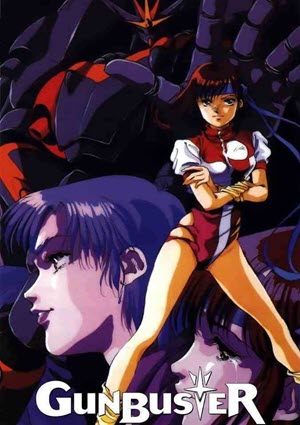 Spoilers ahead, but this show is at least 30 years old so I have no qualms.
Spoilers ahead, but this show is at least 30 years old so I have no qualms. Unlike Wakanda Forever, which seems to have mostly been a disappointment, Quantumania is getting very mixed responses. Leaving aside the people who think any new superhero movie marks the end of civilization as we know it, I think there are genuine criticisms, but that’s because not every Marvel movie aims to do the same things.
Unlike Wakanda Forever, which seems to have mostly been a disappointment, Quantumania is getting very mixed responses. Leaving aside the people who think any new superhero movie marks the end of civilization as we know it, I think there are genuine criticisms, but that’s because not every Marvel movie aims to do the same things.
 This is the January 2023 issue of Salon Futura. Here are the contents.
This is the January 2023 issue of Salon Futura. Here are the contents. The Spear Cuts Through Water
The Spear Cuts Through Water The Keeper’s Six
The Keeper’s Six Queens of the Wild
Queens of the Wild Star Trek: Lower Decks – Season 3
Star Trek: Lower Decks – Season 3 The Grief of Stones
The Grief of Stones The Witcher: Blood Origin
The Witcher: Blood Origin Dragon Age: Absolution
Dragon Age: Absolution Over Sea, Under Stone
Over Sea, Under Stone Chengdu Moves Dates
Chengdu Moves Dates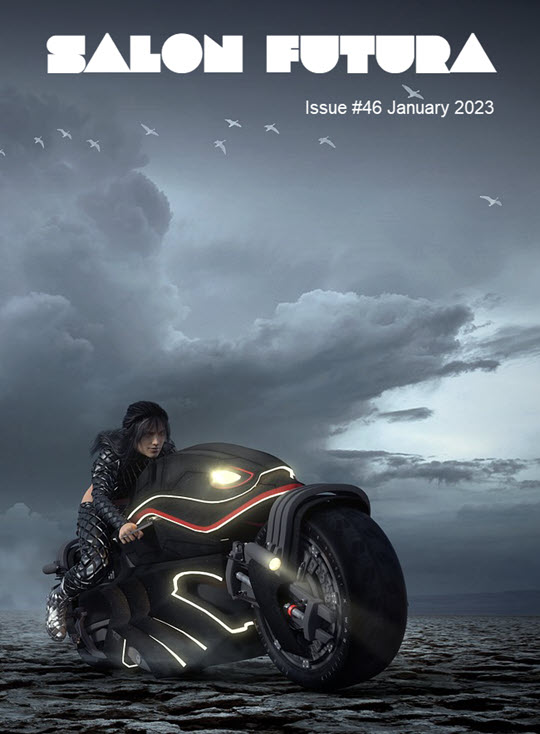

 There is an internet made of giant tortoises.
There is an internet made of giant tortoises.
 How do you make a novella feel like a much bigger book? If you’d like to know, take a look at what Kate Elliott has done with The Keeper’s Six, because it is beautifully executed.
How do you make a novella feel like a much bigger book? If you’d like to know, take a look at what Kate Elliott has done with The Keeper’s Six, because it is beautifully executed.
 This book is a classic example of the conflict between publisher and author. When I first saw publicity for Queens of the Wild I shook my head sadly. Surely Ronald Hutton knew better than that. And of course he does. Professor Hutton is a leading expert on paganism in the British Isles. He’s well aware of the difficulty of saying anything certain about such things. The first thing you find in the book is a preface in which Hutton describes his difficulties with the publisher over the matter of the title. Queens of the Wild: Pagan Goddesses in Christian Europe – An Investigation, is the least bad that he could get them to agree to. He regards the “an investigation” bit as key, and it is.
This book is a classic example of the conflict between publisher and author. When I first saw publicity for Queens of the Wild I shook my head sadly. Surely Ronald Hutton knew better than that. And of course he does. Professor Hutton is a leading expert on paganism in the British Isles. He’s well aware of the difficulty of saying anything certain about such things. The first thing you find in the book is a preface in which Hutton describes his difficulties with the publisher over the matter of the title. Queens of the Wild: Pagan Goddesses in Christian Europe – An Investigation, is the least bad that he could get them to agree to. He regards the “an investigation” bit as key, and it is.
 While I am very impressed with the way that Strange New Worlds replicates the feel of classic Trek, I think that Lower Decks may well be the best Trek because it does two things brilliantly.
While I am very impressed with the way that Strange New Worlds replicates the feel of classic Trek, I think that Lower Decks may well be the best Trek because it does two things brilliantly.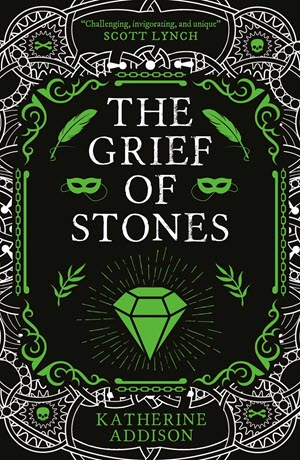 This book is a sequel to Witness for the Dead, which I very much enjoyed. It would appear that Katherine Addison is now planning a series featuring Thara Celehar, the aforementioned Witness. That makes a lot of sense. These are crime novels. It isn’t hard to imagine a series of books in which Celehar solves different crimes. There will, however, be a story arc. The end of this book sets up the next one and makes major changes in Celehar’s life. This is all good. I’ll keep buying the subsequent books in the series.
This book is a sequel to Witness for the Dead, which I very much enjoyed. It would appear that Katherine Addison is now planning a series featuring Thara Celehar, the aforementioned Witness. That makes a lot of sense. These are crime novels. It isn’t hard to imagine a series of books in which Celehar solves different crimes. There will, however, be a story arc. The end of this book sets up the next one and makes major changes in Celehar’s life. This is all good. I’ll keep buying the subsequent books in the series.
 Everything is better with Michelle Yeoh, which is just as well because without her this Witcher spin-off would have been even more of a disaster. Blood Origin is set in the deep past of the Witcher universe. It tells of how the monoliths came to be, of the events that caused the Conjunction of the Spheres, of the arrival of humans and other monsters into the world, and of the creation of the first Witcher.
Everything is better with Michelle Yeoh, which is just as well because without her this Witcher spin-off would have been even more of a disaster. Blood Origin is set in the deep past of the Witcher universe. It tells of how the monoliths came to be, of the events that caused the Conjunction of the Spheres, of the arrival of humans and other monsters into the world, and of the creation of the first Witcher. This was a very pleasant surprise. Dragon Age: Absolution is an animated series. It was recommended on Mastodon by Aliette de Bodard, who in turn got it from Liz Bourke. I know nothing about Dragon Age, the game, so I went into this with no preconceptions.
This was a very pleasant surprise. Dragon Age: Absolution is an animated series. It was recommended on Mastodon by Aliette de Bodard, who in turn got it from Liz Bourke. I know nothing about Dragon Age, the game, so I went into this with no preconceptions. Because I read The Lord of the Rings some time around 1968, and deemed myself over children’s books after that, I missed out on a lot of classic children’s fantasy. The books I am most sad to have missed are the ones that form The Dark is Rising Sequence. That’s partly because I saw Susan Cooper give the Tolkien Memorial Lecture in Oxford a few years back and was very impressed, and partly because of the enthusiasm that so many of my friends have for the books. The BBC serialization that was produced this winter reminded me of this, so I decided to read the books, one per month.
Because I read The Lord of the Rings some time around 1968, and deemed myself over children’s books after that, I missed out on a lot of classic children’s fantasy. The books I am most sad to have missed are the ones that form The Dark is Rising Sequence. That’s partly because I saw Susan Cooper give the Tolkien Memorial Lecture in Oxford a few years back and was very impressed, and partly because of the enthusiasm that so many of my friends have for the books. The BBC serialization that was produced this winter reminded me of this, so I decided to read the books, one per month.
 And this month’s Worldcon drama is…
And this month’s Worldcon drama is…
 This is the December 2022 issue of Salon Futura. Here are the contents.
This is the December 2022 issue of Salon Futura. Here are the contents. Fault Tolerance
Fault Tolerance Bloodmarked
Bloodmarked SMOFCon #38
SMOFCon #38 The Red Scholar’s Wake
The Red Scholar’s Wake Inventing Memory
Inventing Memory Beyond the Northlands
Beyond the Northlands Sir Gawain and the Green Knight
Sir Gawain and the Green Knight Ogres
Ogres On Social Media
On Social Media When It Changed
When It Changed Jethro Tull at Bath Abbey
Jethro Tull at Bath Abbey It is always interesting when I get a new author or series needing a cover. I’m rather enjoying the job of Art Director. And Ben Baldwin has never let me down. This is his cover for the Sean McMullen book, Generation Nemesis. You should be putting him on your Hugo ballot, people.
It is always interesting when I get a new author or series needing a cover. I’m rather enjoying the job of Art Director. And Ben Baldwin has never let me down. This is his cover for the Sean McMullen book, Generation Nemesis. You should be putting him on your Hugo ballot, people.
 This book is the last in Valerie Valdes’ trilogy of stories about Captain Eva Innocente and her rag-tag crew of misfit found family. It is, as usual, a lot of fun. Valdes has made a point of filling the books with nerdy references, and the main characters are largely lovable despite their manifest faults. However, the books are space opera, and that brings with it expectations.
This book is the last in Valerie Valdes’ trilogy of stories about Captain Eva Innocente and her rag-tag crew of misfit found family. It is, as usual, a lot of fun. Valdes has made a point of filling the books with nerdy references, and the main characters are largely lovable despite their manifest faults. However, the books are space opera, and that brings with it expectations.
 Volume 2 of one of my favorite modern Arthuriana series has dropped, and naturally I pounced upon it. Bloodmarked is a sequel to Legendborn, by Tracy Deonn. I really can’t talk about this book without referencing the events of the first book. If you haven’t read that book and don’t want to be spoiled, look away now.
Volume 2 of one of my favorite modern Arthuriana series has dropped, and naturally I pounced upon it. Bloodmarked is a sequel to Legendborn, by Tracy Deonn. I really can’t talk about this book without referencing the events of the first book. If you haven’t read that book and don’t want to be spoiled, look away now.
 I have no particular desire to attend SMOFCon these days. Being a dealer means that I have no time for con-running. But I am interested in spending time with Kevin, and when SMOFCon is not in the USA that’s an opportunity. When it is in Montréal, with the additional promise of excellent food, it is a no-brainer. So I got to spend a week in the Montréal Sheraton, which was an interesting experience.
I have no particular desire to attend SMOFCon these days. Being a dealer means that I have no time for con-running. But I am interested in spending time with Kevin, and when SMOFCon is not in the USA that’s an opportunity. When it is in Montréal, with the additional promise of excellent food, it is a no-brainer. So I got to spend a week in the Montréal Sheraton, which was an interesting experience. The latest writer to get in on the lesbian space pirates gig is Aliette de Bodard. As you might expect, she has a very different take on the subject.
The latest writer to get in on the lesbian space pirates gig is Aliette de Bodard. As you might expect, she has a very different take on the subject.
 This review is re-printed from Emerald City #105 in memory of Anne Harris (1964-2022). Rest in Peace, my friend.
This review is re-printed from Emerald City #105 in memory of Anne Harris (1964-2022). Rest in Peace, my friend.
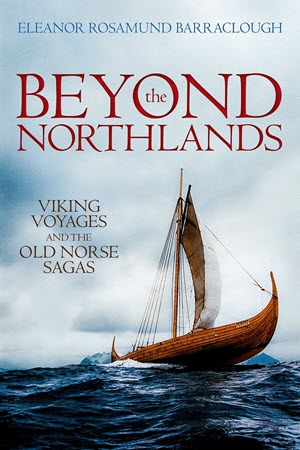 I did promise you that I would be reviewing history books here. I need to get them read, and that means I might as well review them. This one is likely to appeal to a lot of you.
I did promise you that I would be reviewing history books here. I need to get them read, and that means I might as well review them. This one is likely to appeal to a lot of you.
 Given the amount of publicity surrounding the film of The Green Knight, I am a little surprised that there have not been multiple other adaptations of the story. I know of only one: this graphic novel from John Reppion and Mark Penman. Perhaps there have been others and I have missed seeing them, or perhaps the sheer gonzo nature of the story has put people off. Certainly Reppion and Penman had some interesting choices to make. More of that later, but first the easy bit.
Given the amount of publicity surrounding the film of The Green Knight, I am a little surprised that there have not been multiple other adaptations of the story. I know of only one: this graphic novel from John Reppion and Mark Penman. Perhaps there have been others and I have missed seeing them, or perhaps the sheer gonzo nature of the story has put people off. Certainly Reppion and Penman had some interesting choices to make. More of that later, but first the easy bit.
 I understand from social media that the flurry of releases from Adrian Tchaikovsky in 2022 is one of those publisher accident things where a bunch of different companies all manage to get their acts together at the same time. Nevertheless, that fact that so many companies want to publish Tchaikovsky’s work is testament to how respected he is becoming. I do plan to read all of this year’s releases eventually (even if that means having to read the whole of the spider book), but I have a lot of other books to get to so for now you are just getting a review of the novella.
I understand from social media that the flurry of releases from Adrian Tchaikovsky in 2022 is one of those publisher accident things where a bunch of different companies all manage to get their acts together at the same time. Nevertheless, that fact that so many companies want to publish Tchaikovsky’s work is testament to how respected he is becoming. I do plan to read all of this year’s releases eventually (even if that means having to read the whole of the spider book), but I have a lot of other books to get to so for now you are just getting a review of the novella.
 As the online world knows by now, Elon Musk is doing a very effective job of destroying Twitter. Due to the significant uptick in troll and bot activity, and the fact that hatred of trans people was one of Musk’s primary motivations for buying the site in the first place, I have made my account private. This is annoying. While Twitter has been a hotbed of right-wing poison for some time now, I found it perfectly possible to have a mostly quiet life there if you were liberal in your use of the block button, and refrained from trying to argue with people who were clearly posting in bad faith. I had around 9,500 followers, which was useful when I had something I needed to say.
As the online world knows by now, Elon Musk is doing a very effective job of destroying Twitter. Due to the significant uptick in troll and bot activity, and the fact that hatred of trans people was one of Musk’s primary motivations for buying the site in the first place, I have made my account private. This is annoying. While Twitter has been a hotbed of right-wing poison for some time now, I found it perfectly possible to have a mostly quiet life there if you were liberal in your use of the block button, and refrained from trying to argue with people who were clearly posting in bad faith. I had around 9,500 followers, which was useful when I had something I needed to say.